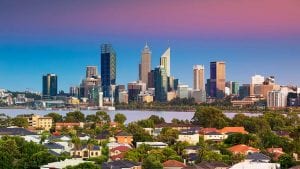Investment banking giant Goldman Sachs has declared the renewable energy sector to be one of the most compelling and attractive markets – and is backing up its talk with $US40 billion ($A46 billion) of made and planned investments.
Goldman Sachs is not the first big bank to talk up the renewable energy sector, or even “sustainable” investments. But it is one of the first to put real money behind it.
In 2012, the bank made a commitment to invest $US40 billion in renewable energy, and it has made a number of large equity investments, over and above the normal advisory and fund-raising work that is the usual bread and butter revenue for investment banks such as Goldman Sachs.
“Goldman Sachs finds this market incredibly compelling,” Stuart Bernstein, who heads the bank’s clean-technology and renewables investment banking group, told Recharge in a recent interview in a story titled Goldman goes Green.”It is at a transformational moment in time.”
Bernstein said the bank is taking a decades-long view and is convinced that renewable energy will be an important component of global GDP growth.
He dismissed suggestions that it was part of a PR campaign – such as BP’s infamous “Beyond Petroleum” pitch of a decade ago where it appeared to spend more in marketing than it did in new technologies.
“It will be important from a societal perspective, and it will be good business for us and our clients,” Bernstein told Recharge. “We want to be extraordinarily focused, involved and have the best franchise in the area. That’s how we think about it.”
Among Goldman Sachs’ key investments are a recently-approved $1.5 billion investment for a near 20 per cent stake in Danish offshore wind energy developer Dong Energy.
 It has also a substantial investment in BrightSource Energy, which is about to bring its huge Ivanpah solar power project (pictured) into full production – it will be the largest in the world.
It has also a substantial investment in BrightSource Energy, which is about to bring its huge Ivanpah solar power project (pictured) into full production – it will be the largest in the world.
Goldman Sachs also provided $500 million of finance to SolarCity, to allow the biggest solar installer in the US to expand its solar leasing business. Goldmans is one of a number of banks to do that –the latest was Bank of America/Merrill Lynch.
It has also been an early investor in First Solar, the largest solar PV manufacturer in the US, SunEdison, and made big money from the sale of Horizon Wind Energy to Portugal’s EDP for $2.15 billion in 2007.
Goldman’s commitment of $40 billion is based around a number of assumptions – that costs will continue to decline as efficiency improves, that solar and wind will reach grid parity without subsidies in the not-too-distant future, and that energy storage issues will also be solved.
It also believes that the position of coal at the top of the global fuel mix is eroding – something that it highlighted in a recent report that said the window for thermal coal was closing rapidly.
According to the Recharge article, much of Goldman Sachs’ investments will be focused on the emerging economies of Brazil, China, India and Mexico —along with developed economies such as Japan and South Korea that have also made a large commitment to renewables, and are reliant on expensive fossil fuel imports.
In Japan, Goldman Sachs has established a new independent power producer called Japan Renewable Energy (JRE) — to develop, build and operate solar, wind and other renewables projects. It is backed by the bank’s $3.1 billion GS Infrastructure Partners II fund (GSIP). It has already committed to a 250MW solar project in Okayama and a 40MW PV plant near Tokyo.
Goldman has paid more than $3400 million for a majority stake in an Indian wind energy business called Renew Wind Power, which plans to build 1GW of facilities within two years, and it is looking to build solar energy plants to supply mining operations in Chile, where even companies such as BHP Billiton are looking at alternatives.
Bernstein also heads Goldman’s venture-capital group, which has a key office in California’s Silicon Valley and which is focusing on late-stage venture companies. Recharge says it is also using its convening power to host conferences and forums for sector stakeholders.
Other investments include the FloDesign Wind Turbine, a start-up that was developing an experimental high-efficiency shrouded wind turbine, and South Korean wind turbine manufacturer CS Wind, which plans an IPO this year.









